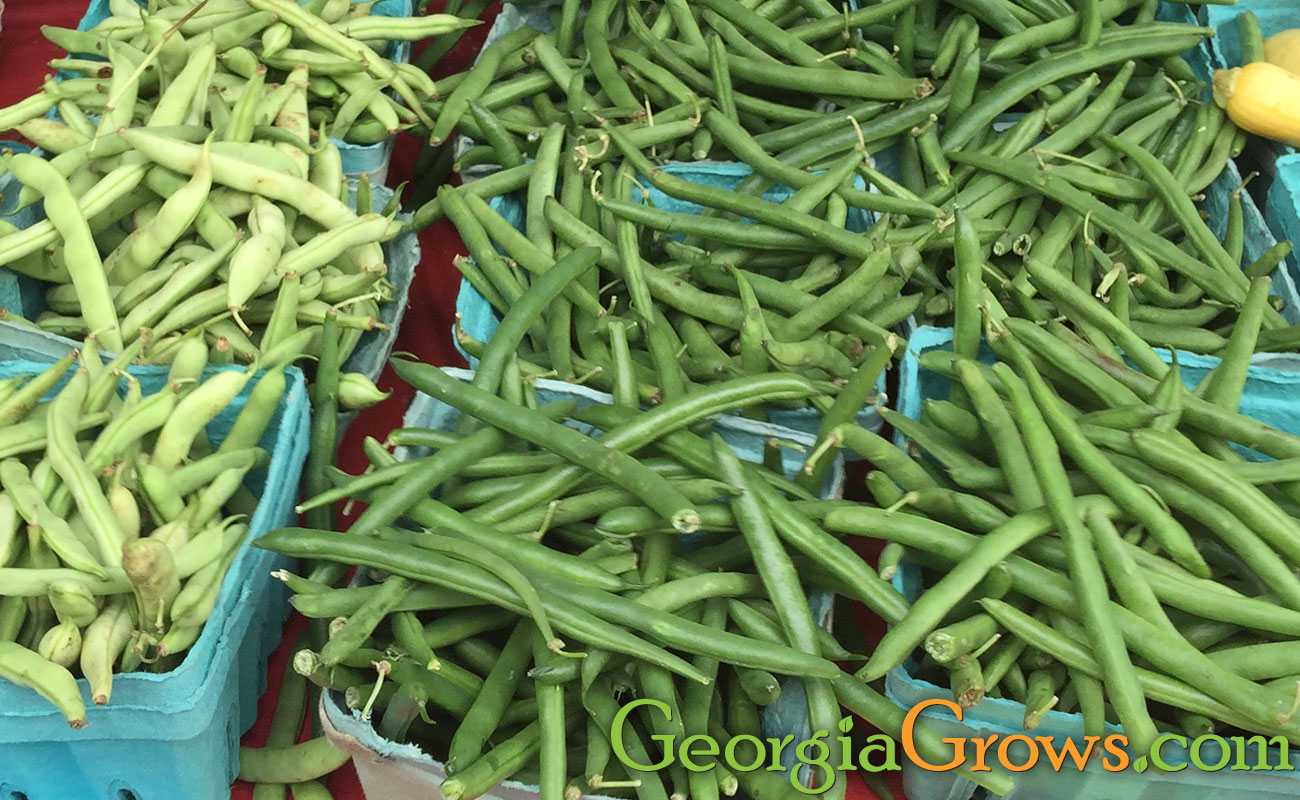Snap beans, also known as green beans, pole beans, or string beans, are a popular and versatile vegetable enjoyed for their crisp texture and vibrant flavor. In Georgia, the snap bean season extends from March through November.
Here are 10 key facts about snap beans:
- Varieties: Snap beans come in various cultivars, including bush beans and pole beans. Bush beans are compact and do not require support, while pole beans grow on climbing vines and benefit from trellises or stakes for vertical growth. Both types offer different advantages in terms of ease of cultivation and yield.
- Nutritional Value: Snap beans are highly nutritious and a good source of vitamins A, C, and K, as well as dietary fiber. They also provide minerals such as folate, iron, and potassium. Snap beans are low in calories and fat, making them a healthy addition to a balanced diet.
- Harvesting: Snap beans are typically harvested when the pods are still young, tender, and before the seeds inside have fully developed. This ensures a crisp and flavorful eating experience. Regular harvesting encourages the plant to produce more beans, so it’s best to pick them frequently as they reach the desired size.
- Culinary Uses: Snap beans are incredibly versatile in the kitchen. They can be enjoyed raw in salads or as a crunchy snack, but they truly shine when cooked. Snap beans can be steamed, sautéed, stir-fried, roasted, or blanched and added to various recipes, including soups, stews, casseroles, and side dishes. They are often paired with complementary ingredients such as garlic, lemon, herbs, and spices.
- Stringless Varieties: Traditional snap beans used to have fibrous “strings” that needed to be removed before cooking. However, modern breeding has led to the development of stringless varieties, eliminating the need for this extra step. Stringless snap beans are more widely available and easier to prepare.
- Seasonality: Snap beans are a warm-season crop and are typically available during the summer months, from late spring to fall in Georgia, depending on the specific growing region. They are often found fresh in farmers’ markets and grocery stores during this time.
- Growing Conditions: Snap beans thrive in full sun and well-drained soil. They are relatively easy to grow and are a popular choice for home gardeners. Regular watering and proper spacing between plants contribute to healthy growth and abundant yields.
- Health Benefits: Snap beans offer numerous health benefits. They are low in calories and high in fiber, which aids digestion and helps maintain a healthy weight. The vitamins and minerals in snap beans contribute to overall well-being, supporting immune function, bone health, and healthy blood pressure levels.
- Cultural Significance: Snap beans are a staple in many cuisines around the world. They are commonly used in traditional dishes in countries such as the United States, France, Italy, and China, among others. Snap beans are also frequently preserved through canning or pickling, allowing them to be enjoyed even during the off-season.
- Culinary Pairings: Snap beans complement a wide range of ingredients and flavors. They pair well with herbs like dill, basil, and thyme, as well as spices such as garlic, ginger, and chili peppers. They can be incorporated into salads, pasta dishes, stir-fries, vegetable medleys, or served as a side dish alongside meat, poultry, or fish.
Snap beans are a versatile and nutritious vegetable that can be enjoyed in various ways. Whether incorporated into your favorite recipes or simply enjoyed steamed or sautéed, snap beans offer a delightful crunch and fresh taste that can elevate any meal.


